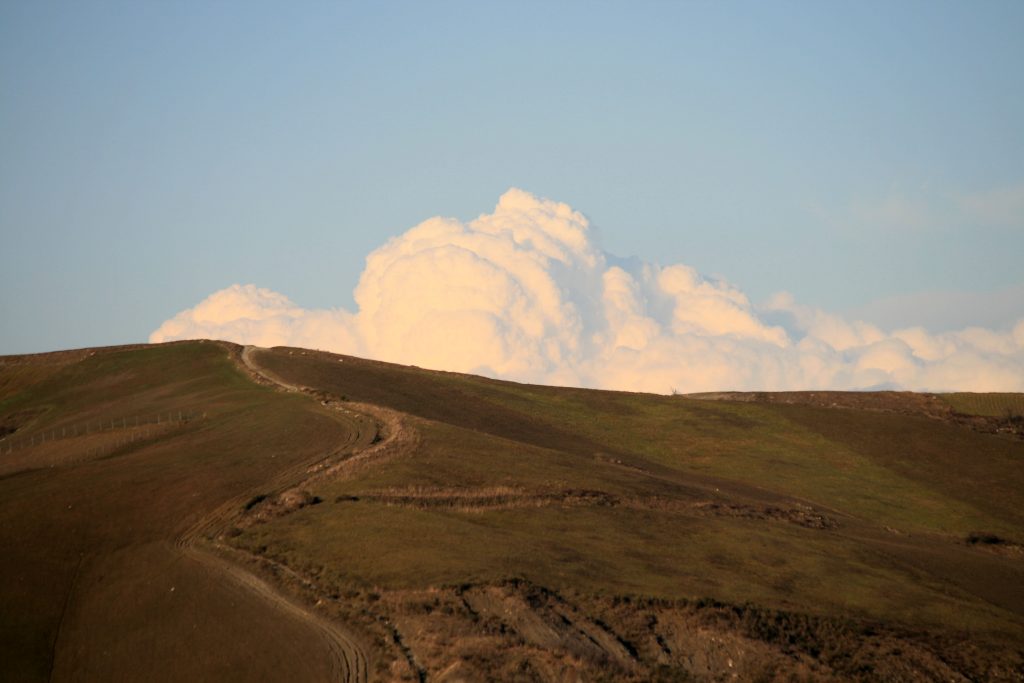The Missing Link: the Moor
Warning, this is a hamster article. What???
A hamster article is one of those articles that starts running into the writers’s mind, exactly as a hamster would do on its wheel. Hamster articles want to be told and can get impatient. My hamster has been running for more than a month, it is time to make it happy. The little critter wants me to write about the Missing Link, or rather, about the Moor. Those who know me personally, or have been in touch with me for a while, have probably already realized that I am a little weird, and that I am completely at ease with this trait. But, sometimes, I do feel out of place or as if something was missing.
Speaking of English Setters, which I am deeply devoted to, a puzzle piece was missing, it took me 16 years since my first setter to find it. Most weird adults had been weird children, I am not exception: as toddler, I absolutely refused milk and my feeding bottle used to contain tea, no wonder I could not sleep. When I was four, the kindergarten teachers called my parents, they were alarmed because I used too much purple and violet in my drawings. My parents could not give any rational explanations, nor I can’t being still known by the paint shop as the lady who orders custom made mauve/heather for her walls. At five, I used to have tea and potato pancakes for breakfast, normal Italian children were fed coffee-latte with biscuits. I think it was also the time I was given a booklet on Queen Elizabeth 25th Silver Jubilee, I kept it like a treasure and it is still on my bookshelf. One year later, I joined an extra-curricular English language class, and discovered through my textbook, that British houses for sale have bathtubs full of giant spiders. And, finally, at ten, I was absolutely convinced that I “needed” a working English Setter, my parents not so.

Years later, I eventually got one and I began shooting over pointing dogs and attending field trials. Something, however, was missing. I enjoyed my time in the countryside, I kept reading, asking and following judges and more experienced hunters to learn more, but something I could not define was still missing. All that I knew was that I loved some shooting grounds more than others. I could mention Villa Alta in Ruino; Costa del Vento and Costa Pelata in Montalto – all of them in the Apennines and all of them, ironically – I would have discovered later – pretty moor-like. Other places were simply dull. Italians believe British pointing dogs need space, and justify “grand quete” and its extremes, on the premise that these dogs were born for the moors. My fellow countrymen think that is perfectly fine for an English Setter to run from a valley to another (while being tracked with a GPS collar) because it was created to run on moors. Pointers are allowed to run even wider, two or three valleys might be fine. I did not buy into this theory entirely, but I managed to keep my thoughts for myself. Maybe they were right but, to me, it was like they were trying to fit a foot in the wrong shoe.

Setters running in wide open plains, setters used in woods, or among briars and bushes, were doing well, proving to be a quite versatile and adaptable breed but, my gut feelings kept telling me something was still out of place. I had old pictures of setters on the moor in my books and on my walls, they were black and white pictures and I could not figure out the colours. In 2008, at the CLA Gamefair, I purchased the GWT (Gamekeepers Welfare Trust) Ladies & Gamekeepers Calendar: the moor was shining in purple! It was not just the heather: the sky and the light were coming in different shades of violet, the whole atmosphere was purple! It was so surreal, so magic! I though the colours had been recreated using Photoshop. I can be pretty naïve sometimes!
In 2015 went on a moor for the first time and everything felt incredibly familiar and normal. The dogs running on the moor were fitting perfectly in the picture: grouse, heather and lavender skies seemed to have been tailored for them. As soon as I left the moor, I missed it: I felt I had to go back, live it, understand it. One year later, those purple skies were watching me from above, I was smiling back at them. I spent a month among heather, among grouse, among British pointing dogs: everything fell into place, my English Setter, who was there, can confirm. Setters belonged to the moor, or viceversa; grouse suited the dogs perfectly; heather supported their job and weather was great! Well, weather on the moor is hardly great, if we evaluate it according to human standards, but if you are a dog that is a great weather! It is cold enough, windy enough, wet enough. I got so used to being blown away by the wind that I seriously miss it!
I was (and I am) so in love with the moor that I enthusiastically shared pictures with my Italian friends whose mixed reactions surprised me. One, in particular, noticed that the moors are lacking of trees, they are barren he stated. I never noticed there are no trees, this probably happened because I do not consider moors to be barren. On the contrary, they are full of wonderful gifts, you just have to be sensitive enough to recognize them. I do not need woods, woodcock do not bewitch me: Italians love shooting woodock over English Setters, they are fascinating birds, but I cannot honestly claim I love them. Grouse are different and they are great teachers, both challenging and patient, I think they are probably one of the best birds for training pointing dogs. Also, I do not consider woods to bethe ideal ground for an ES: trees and leaves prevent you from seeing the dog work, heather instead, while hiding grouse, leaves the dog under the spotlights.

The moor is a sacred space and only well behaved dogs are welcome: moors are for training, trialling and shooting. Up to now I have experienced only the first two activities and I I will keep writing on them, what I can say, briefly, is that trialling in the UK is different. I am not here to claim it is better (or worse) and I cannot find a proper word to define my feelings towards it, but, in its being different it seems incredibly normal to me and… it proved me right! Moor, grouse & trials teach the dogs to range wide but “properly wide” which differs from “nonsense wide”. The ground openness might be tempting, but a smart pointing dog, trained the British way, will run as wide as it would be allowed to do during a traditional – GPS free -shooting day. Being shooting the first gundog related activity I got involved in, I cannot but agree. Maybe one day I will witness grouse shooting, this will put the finishing touches to the painting: English Setter, purple heather, gunpowder smell and lavender skies.
Still curious about British trials? Check the section A Month on the Moor or click here.